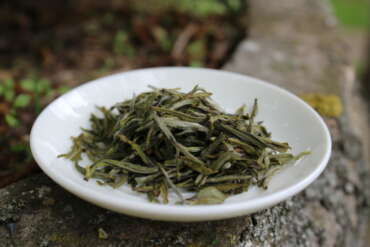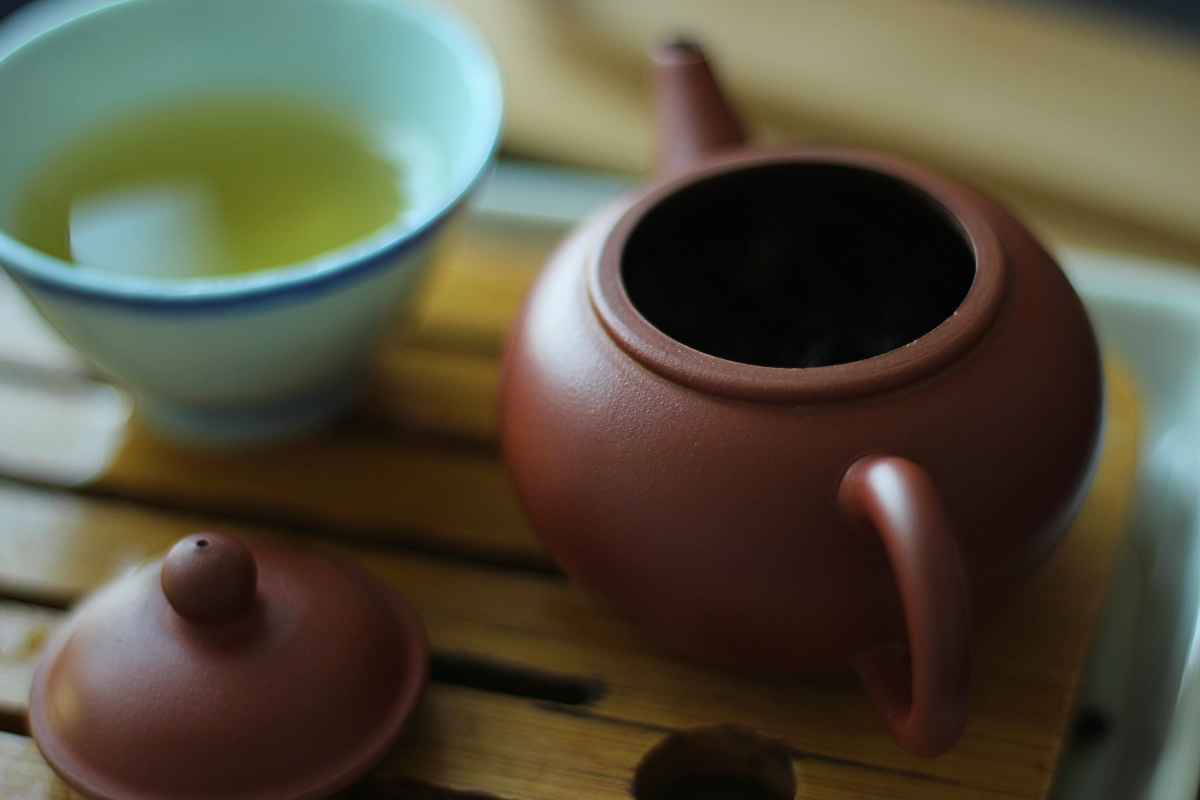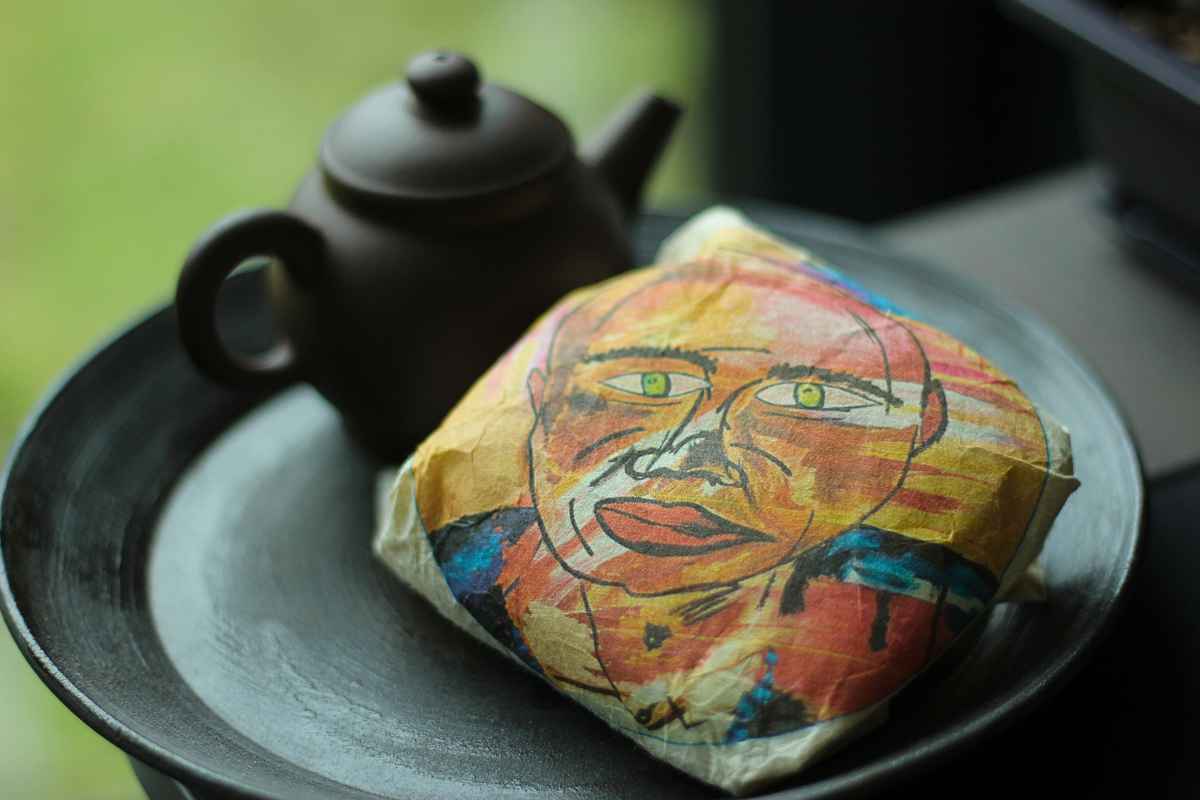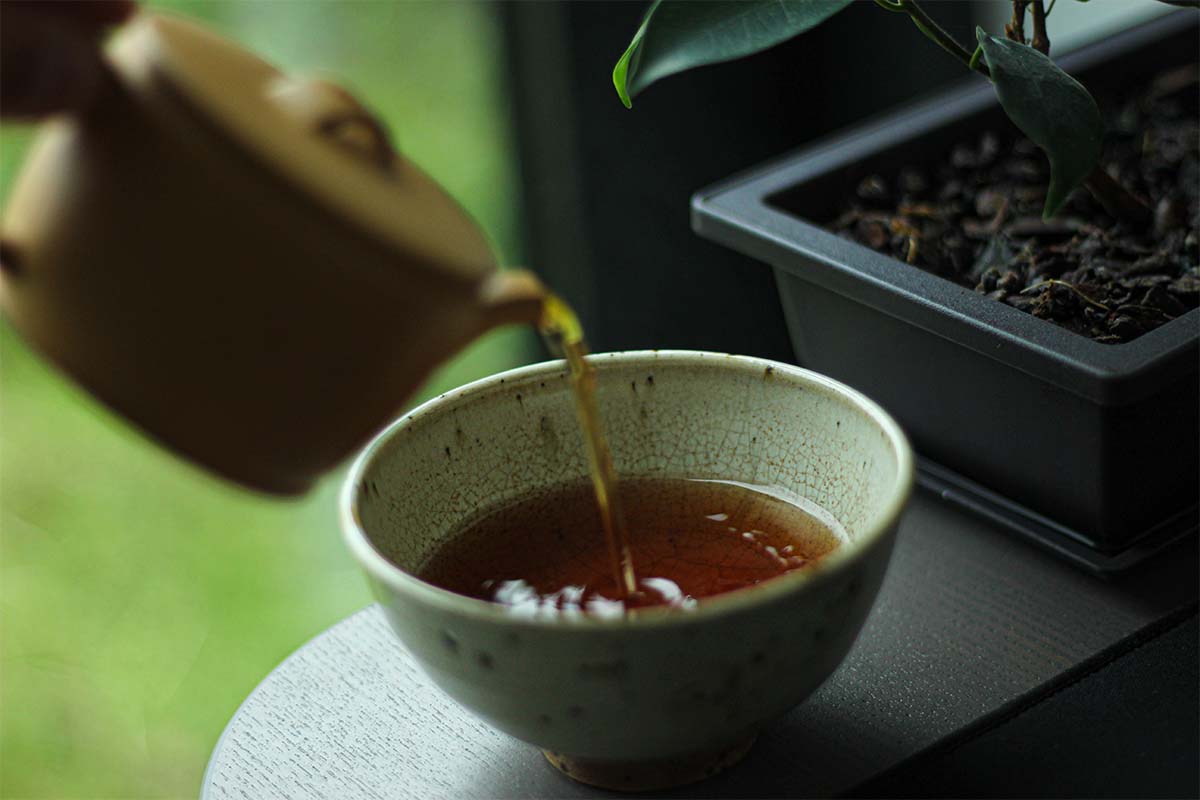I recently purchased some yellow tea from Mei Leaf and was intrigued by the delicacy of the tea. That is why I thought it would be interesting to find out what yellow tea is exactly and how it is different from other types of tea. The tea I bought is Junshan Yin Zhen, which is a silver needle tea that is purely made of buds of the tea plant. Yellow tea is mainly found in China and has been offered to emperors as a tribute for several centuries. This in itself already shows the exclusivity of this type of tea and why it is hard to come by in the West. But why do we call it yellow tea? It undergoes an additional step during the production process that is only done when producing this type of tea. The leaves are covered with a damp cloth (or paper), which initiates light oxidation and gives the leaves a yellowish hue.
Junshan Yin Zhen
Originally, this yellow tea comes from Junshan Island in the Dong Ting Lake, which is located in the Northern part of China’s Hunan province. This tea is usually made of buds of the tea plant, which means that a lot of tea plants are necessary to produce it. The tea that is being sold by Mei leaf is not really Yunshan Yin Zhen, technically speaking, because it is not from Yunshan Island itself but from Pingjiang, which is very close to the island. The reason for this is that authentic Junshan Yin Zhen is very rare and thereby immensely expensive (around 1000 dollars for 100g). Does this mean that the yellow tea that is being sold by Mei leaf is of lesser quality? No! absolutely not! It just means that if you want authentic Junshan Yin Zhen tea, you will pay a lot just for the name and rarity. Plantations that are close to the island also produce some high quality “Junshan” Yin Zhen, but technically speaking, it’s not really “Junshan” Yin Zhen.
What makes it so special?
What makes this tea so special and thereby so expensive? The yearly production of this type of tea is limited and very intense, which results in low amounts of tea available on the market. This, in its turn, makes the tea that is available very expensive. The main reason not a lot of this tea is produced every year is because it’s difficult and time-consuming. A lot of producers choose to produce teas that are more cost effective to earn more money. That is why the technique of making yellow tea is not that well-known and is also why some yellow teas have been lost to history because no one knows how to make them anymore.
Producing yellow tea
As mentioned above, the process of producing yellow tea is time-consuming and not easy. I will give a general overview but it’s a bit self-evident that these are general guidelines and that each kind of yellow tea has its own specific production technique. In general, the production process is similar to green teas but there is one big difference.
The first step in producing this tea is plucking tea leaves. As I have said before, usually only buds are picked to produce this type of tea, especially when one aims to produce top quality tea.
The next step is withering the leaves. This implies that the leaves lose their moisture by placing them on cloths or bamboo racks.
The third step is heating the leaves to stop oxidation, which is also referred to as the kill-green process (or fixing). It deactivates the enzyme that is responsible for oxidation by heating the leaves. The difference between green teas and yellow teas is that the fixing of yellow teas, generally speaking, is much shorter and at a lower temperature.
The fourth step in the production process is the step that makes the leaves go slightly yellow. While the leaves are still warm, they are wrapped in cloth or paper to initiate some post-oxidation. This type of oxidation is slower than regular oxidation and gives a mellower taste than most green teas. The Mandarin term for this process is ‘men huang’ (闷黄), which translates to sealed yellowing.This process of wrapping and closely keeping an eye on the leaves is a difficult and labour-intense process. It’s a skill that has to be mastered and not a lot of people are able to do this successfully. This process can be repeated several times until the desired flavour profile has been achieved. Once this process is finished, the leaves have a yellowish colour, hence its name.
The final step is drying the leaves to prepare them to be sold.
Conclusion
After reading this, I think you know why yellow tea is not as widely available as the other types of tea. It really is something special; partly because of its exclusivity and partly because of the intense production process. Do not hesitate to try some if you ever have the opportunity!




